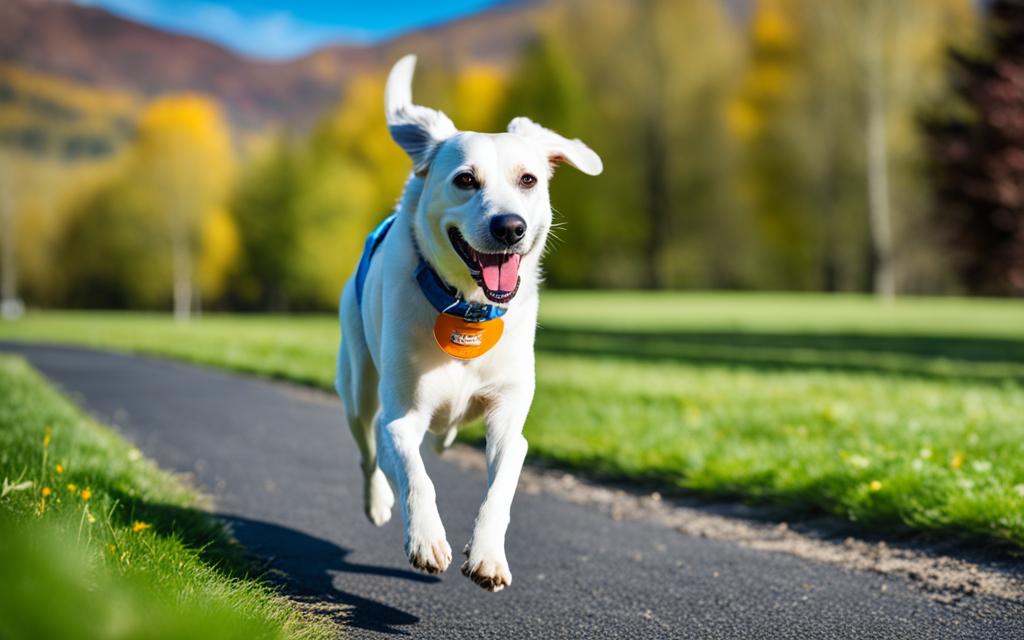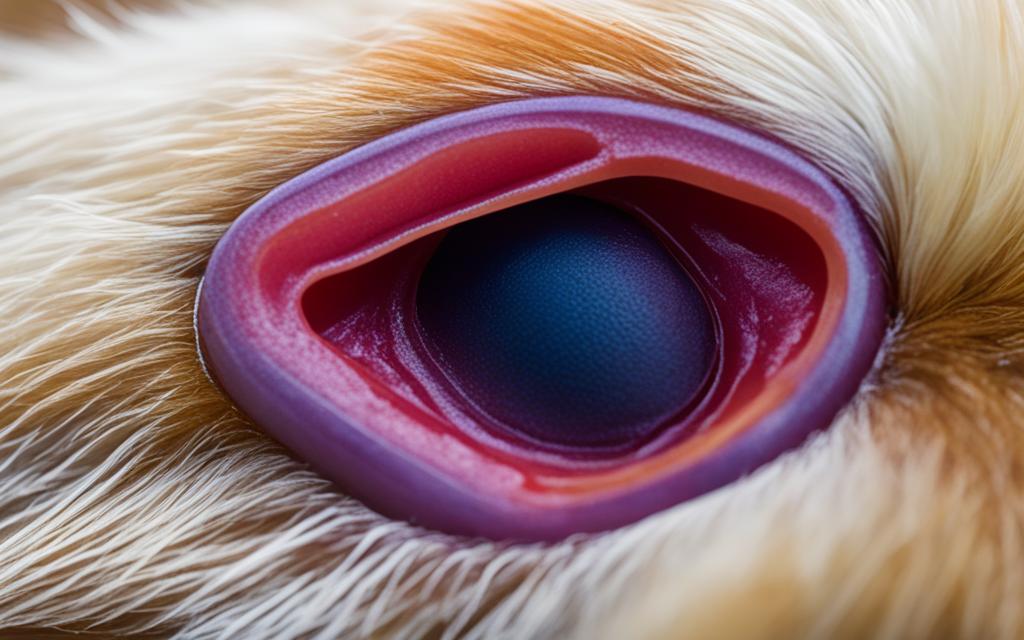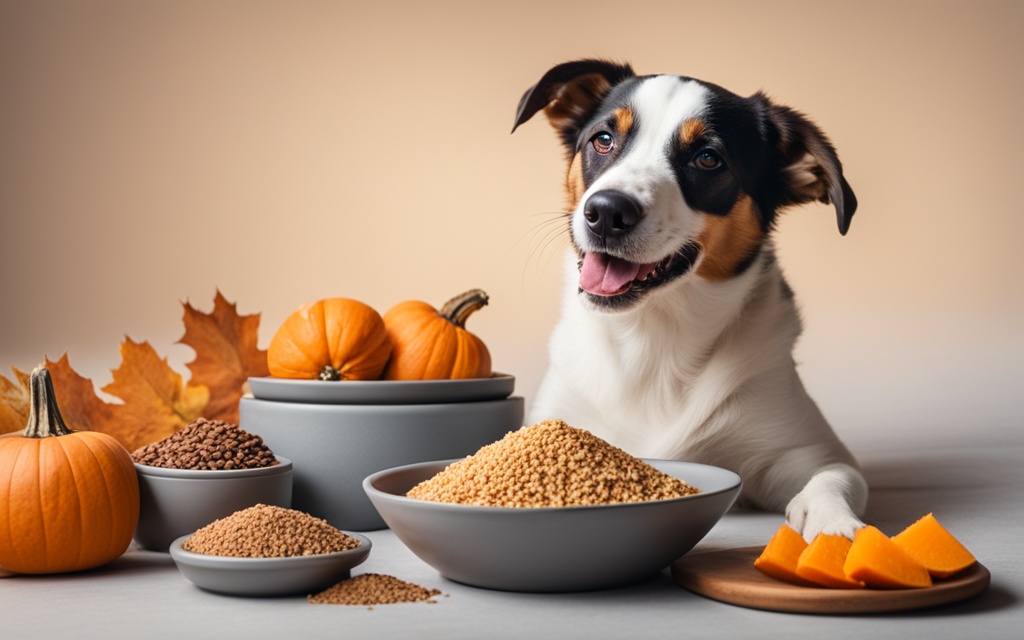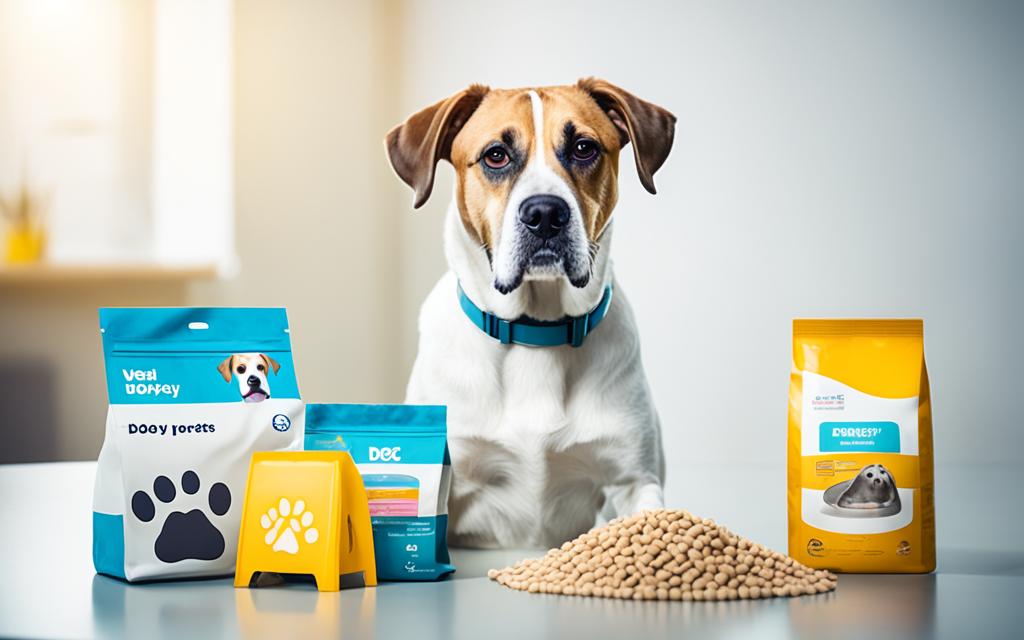Keeping your dog at a healthy weight is key for their health and long life. With more dogs getting overweight, it’s important for owners to manage their pets’ weight. This article will share tips and strategies to keep your dog at a good weight. By learning how to maintain a healthy weight, you can help your dog live a healthier life.
Understanding the Importance of a Healthy Weight
Keeping a healthy weight is key for dogs’ well-being and long life. It’s not just about looking good. It helps prevent diseases and keeps dogs active. Dogs at a healthy weight have more energy and can move better, making playtime fun.
Being overweight can lead to serious health problems in dogs, like diabetes and arthritis. Obesity can make dogs less happy and shorten their lives. But, dogs at a healthy weight live longer and have more fun, showing how important weight management is.
The AKC Canine Health Foundation stresses the need to watch a dog’s weight to prevent health issues. By knowing how weight affects health, owners can help their dogs live longer and happier lives.
Common Causes of Weight Gain in Dogs
It’s key to know why dogs gain weight to keep them healthy. Many things can make a dog put on pounds. Overfeeding is a big problem. Owners often give their dogs too much food, which means more calories.
Not enough exercise is another big reason for pet obesity. Dogs need to move to burn calories and keep muscles strong. Dogs that don’t get enough exercise can easily become overweight.
Some dogs are more likely to gain weight because of their breed. Certain breeds tend to gain weight more easily. Owners should know what their dog’s breed needs to help manage their weight.
Health issues like hypothyroidism can also cause weight gain. This condition slows down metabolism, leading to weight gain even with careful diet. Owners should talk to a vet to check for health problems that might affect their dog’s weight.
Environmental factors also play a part in weight gain. Dogs can snack all day if food is always available. Setting regular feeding times can help stop this.
Knowing the causes helps owners manage their dog’s weight better. By addressing these issues, dogs can live healthier lives and be happier overall.
Tips for Maintaining a Dog’s Healthy Weight
Keeping a dog at a healthy weight is key. It requires balanced nutrition and regular exercise. These strategies support their physical health and improve their life quality. Here are some important tips for dog nutrition and exercise.
Balanced Diet and Nutrition
A balanced diet is crucial for weight control. Make sure your dog eats food full of proteins, vitamins, and minerals. Brands like Blue Buffalo and Royal Canin offer various options for different needs and tastes. When picking dog food, look for:
- High-quality protein sources, such as chicken, fish, or lamb.
- Healthy fats, important for energy and skin health.
- Complex carbohydrates that give long-lasting energy.
- Fiber to help with digestion and keep them feeling full.
Incorporating Regular Exercise
Exercise is vital for a dog’s weight management. It helps burn calories and keeps muscles strong. Adjust exercises based on your dog’s age, breed, and energy. Follow the American Kennel Club’s advice for exercise:
- Do at least 30 minutes to 2 hours of exercise daily, based on breed.
- Add walks, playtime, and brain challenges to their routine.
- Watch your dog’s energy. Change the intensity and time as needed.
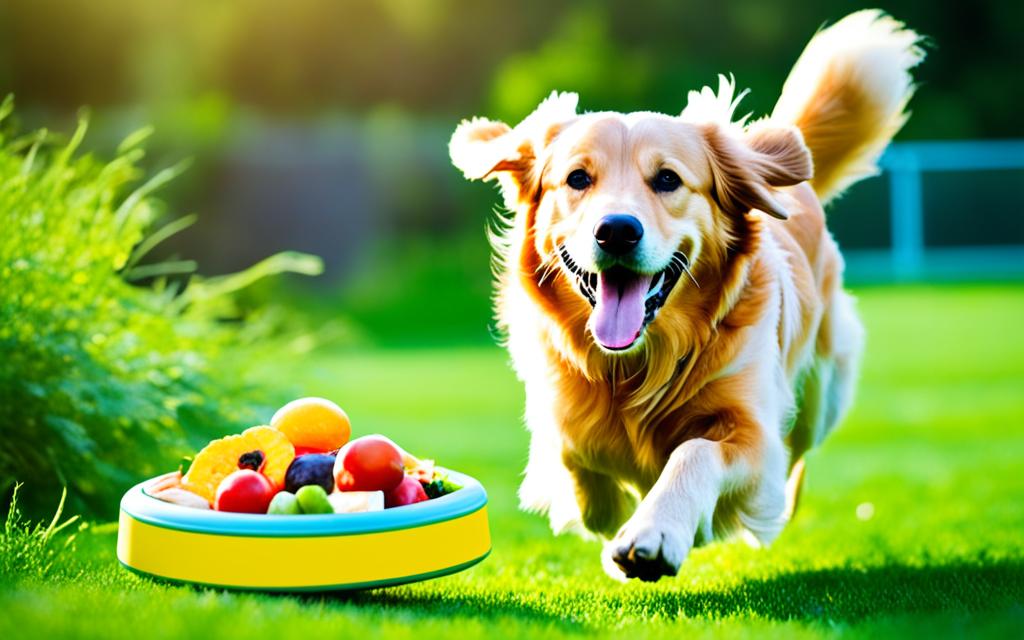
How to Choose the Right Dog Food
Choosing the right dog food is key to your pet’s health and happiness. It’s important to look at the nutrition in dog food to fit your pet’s needs. Knowing what to read on food labels helps make better choices.
Assessing Nutritional Value
First, check if the dog food has the AAFCO certification. This means it meets basic nutritional standards. High-quality ingredients, like good protein sources, are important for muscles and energy. The food should also have vitamins, minerals, and fatty acids for a balanced diet.
Understanding Portion Control
How much food your dog eats affects their weight. To figure out the right amount, think about their weight, how active they are, and their age. Most dog food brands give guidelines based on these things. Talking to your vet can give you advice that fits your dog’s unique needs. Keeping an eye on how much you feed your dog helps them stay at a healthy weight and boosts their overall health.
Creating an Effective Feeding Schedule
Having a regular dog feeding routine is key to your pet’s health and happiness. It makes your dog feel secure, which can lower anxiety and improve their behavior. A set schedule for feeding helps your dog know when it’s time to eat.
Adult dogs usually do well with two meals a day. This matches their natural eating habits and keeps them at a healthy weight. Puppies, however, need to eat more often, about three to four times a day, because they burn more energy.
Feeding your dog all day can lead to overeating and weight gain. Timed feedings help your dog eat only when food is given out. This approach supports a balanced diet and teaches your dog to eat on a schedule. Dogs love routine, and knowing when they’ll eat makes them happier.
Creating a feeding schedule takes some planning. Here are some tips:
- Pick specific times each day for feeding and stick to them.
- Use accurate measurements for food based on your dog’s size and activity level.
- Don’t give too many treats between meals to avoid overeating.
| Dog Size | Recommended Feeding Frequency | Portion Size (per meal) |
|---|---|---|
| Small (up to 20 lbs) | 2-3 times a day | 1/2 – 1 cup |
| Medium (21-50 lbs) | 2 times a day | 1-2 cups |
| Large (51+ lbs) | 2 times a day | 2-3 cups |
By following these tips, you can create a balanced feeding routine for your dog. This helps keep them healthy and at a good weight. A regular feeding schedule also supports your dog in living a happy, active life.
Monitoring Your Dog’s Weight and Health
Keeping an eye on your dog’s weight is key to their health. Regular vet visits help track their health and spot problems early. Watching their weight and looking for obesity signs is crucial for their well-being.
Regular Weigh-Ins
It’s important to weigh your dog regularly to see how their weight changes. You should weigh them:
- Every two weeks when losing weight
- Monthly to keep a healthy weight
- After seasonal changes or diet changes
Using a digital scale gives accurate readings. Keeping a record of these weights helps spot trends. This way, you can make smart choices about their diet and exercise.
Recognizing Signs of Weight Issues
Knowing the signs of obesity in dogs helps with early action. Look out for these signs:
- Difficulty climbing stairs or getting into the car
- Lethargy or less playfulness
- Poor coat condition or excessive shedding
- Visible increase in waist size
Seeing these signs means you can act fast. Adjusting their diet and exercise can help manage their weight.
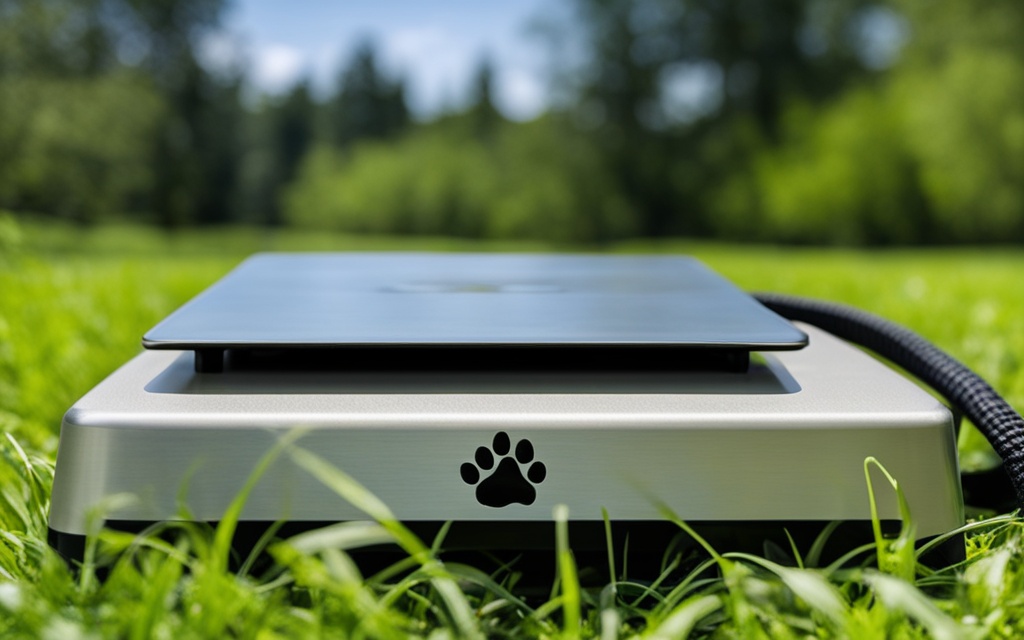
Regular monitoring and observation are key to a proactive approach to your dog’s health. The more you notice changes in their weight and behavior, the better you can keep them healthy.
Importance of Vet Check-ups
Regular vet visits are key to your pet’s health and weight management. These visits let experts check your dog’s health and make sure they stay at a good weight. They also help spot early signs of health problems that you might not see at home.
Vets can give advice during these check-ups that’s specific to your dog’s health. They look at things like body condition score, weight changes, and obesity-related health issues. This helps dog owners take steps to make their pets healthier.
The American Veterinary Medical Association suggests dogs see the vet once a year. Dogs with health issues might need to go more often. Keeping an eye on your dog’s weight and health with a vet’s help is crucial for caring for your pet.
Making Weight Management Fun!
Making weight management fun for dogs and their owners can lead to a healthier life. Fun dog activities keep dogs fit and strengthen the bond between them and their owners. Adding playful exercises to your dog’s routine makes weight management an adventure, not a chore.
Interactive food puzzles give dogs a fun way to exercise their minds and bodies. They enjoy working to find their kibble, making mealtime exciting. Outdoor activities like hiking or playing fetch let dogs burn calories while having fun. These activities make daily routines exciting and fit into any owner’s life.
Consider these fun dog activities that help with weight management:
- Agility training: Set up an obstacle course in your backyard.
- Water play: Take your dog to a local dog-friendly beach or lake.
- Hide and seek: Hide treats around the house for your dog to find.
- Group playdates: Arrange playdates with other engaging dogs in the neighborhood.
The Dog Obesity Task Force stresses the need for fun in weight management plans. Dogs stay engaged when activities excite them. By mixing exercise with play, owners and dogs can work towards a healthier weight together.
| Activity | Description | Benefits |
|---|---|---|
| Agility Training | Set up an obstacle course using cones and tunnels. | Enhances coordination and burns calories. |
| Water Play | Bathe in shallow water or splash at a dog park. | Low-impact exercise great for joints. |
| Interactive Puzzles | Treat-dispensing toys that challenge dogs. | Stimulates mind while promoting physical activity. |
| Fetch Games | Play fetch with balls or frisbees in a park. | Provides cardiovascular fitness and bonding time. |
Conclusion
Keeping your dog at a healthy weight is key for their happiness and long life. This article has shown how diet, exercise, and watching their health are important. By following the tips given, you can help your pet stay fit and live better.
Remember, every dog is different. What helps one might not help another. So, watch what your dog needs and talk to a vet to make a plan that keeps them healthy. With effort and the right plan, keeping your dog at a good weight can be a great part of your life together.
Managing your dog’s weight well, from food to exercise, is the first step to a happy life together. By focusing on these areas, you’re not just helping them stay fit. You’re also making them happier and more spirited.
